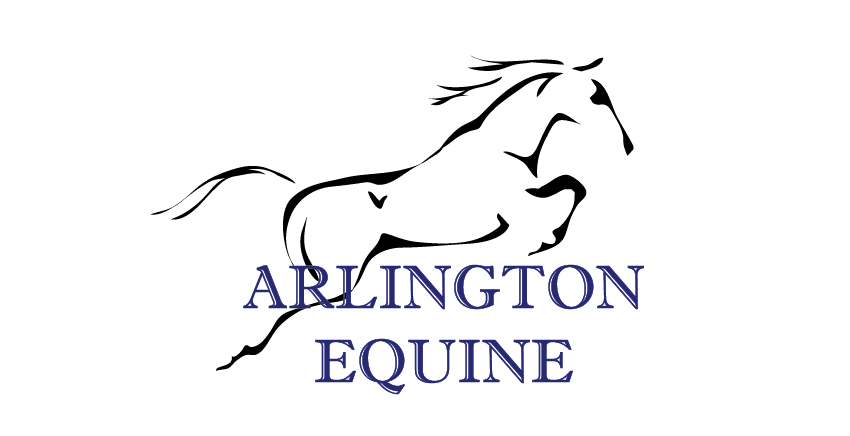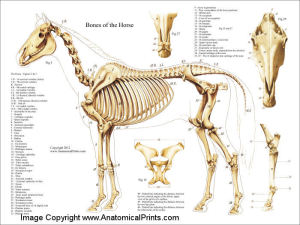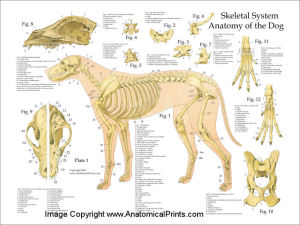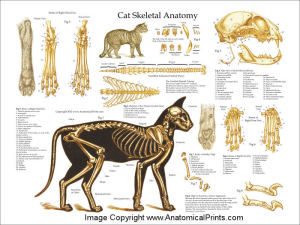Animal chiropractic care is a manual therapy which focuses on restoring movement and balance to the spine. Chiropractic, also called Vertebral Spinal Manipulative Therapy (VSMT), detects and alleviates biomechanical dysfunction of the spine so that the entire body can operate more optimally. Chiropractic is concerned with keeping animals healthy, active, and energetic by supporting the innate intelligence of the body to function properly as a whole.
The body is a complex web of interconnected systems. The nervous system is the master controller for all of the structures and functions of the body. Information from the brain travels down through the spinal cord and out to the rest of the body through the spinal nerves, which are located at the level of each vertebrae. The vertebrae and their associated nerves are maintained in a specific alignment. Alterations in this alignment can be detected by those trained in animal chiropractic, due to subtle deviations from the optimal range of motion of the effected joints. The bones are not “out of place,” rather they are stuck within their ranges of motion. These stuck joints are called Vertebral Subluxation Complexes (VSCs).
The goal of a chiropractic examination is to identify and adjust VSCs to restore mobility to the joint. This will, in turn, alleviate inflammation in and pressure on surrounding nerves and soft tissue. The inflammation works like static on a telephone line and makes it difficult for nerves to transmit their messages. By clearing the VSCs and removing this “static,” the nervous system can communicate more efficiently to control every aspect of the body (from gait to the immune system). Chiropractic care is not just about making a “sore back” feel better; it’s really about cultivating great health.
Chiropractic care is not intended to replace traditional veterinary medicine. When used together, chiropractic and veterinary approaches can provide the maximum health benefits to animals so they can live long, happy lives. For example, animal chiropractic can provide additional diagnostic and treatment options for lameness issues, acute or chronic pain syndromes, and biomechanical performance problems.
What sort of problems could benefit from chiropractic care?
Over time, VSCs cause changes in the animal’s biomechanics, strength, coordination, and flexibility. The symptoms we see as a result of these changes can be varied, including:
All animals
- Changes in behavior or posture.
- Muscular spasms or atrophy.
- Sensitivity to touch.
- Difficult to localize or shifting lameness.
- Stiffness, decreased mobility, or unwillingness to bend the head, neck, and/or back.
Horses
- Discomfort when being saddled or while ridden.
- Resistance to collection, lateral gaits, or neck/poll flexion.
- Subtle differences in gait, such as trouble maintaining or changing leads.
- Evasion issues such as tossing head, grabbing the bit, or hollowing the back.
- Hesitation when doing previously normal things: picking up feet, stepping down out of a trailer, turning in either direction, refusing jumps.
Small Animals
- Lowered head carriage, often with hunching of lower back.
- Difficulty getting up and down (stairs, couches, beds, etc).
- Signs of discomfort when being picked up.
- “Puppy sitting” in an adult dog.
- Lick granulomas on legs or paws.
- Several types of anal gland, digestive, and urinary disorders.
What does a chiropractic examination entail?
Following a detailed discussion of the patient’s history, each joint in the animal’s spine and extremities is evaluated. There are five components of the examination:
- Posture analysis – the way the animal holds itself can give clues regarding the amount and location of various sources of pain.
- Gait analysis – quadrupeds are able to shift their weight to compensate for painful conditions. Watching the animal in motion allows us to assess any biomechanical deficiencies.
- Detection of spinal heat – heat is an important indicator of inflammation.
- Static palpation – bony asymmetries and/or atrophy, swelling, or overdevelopment of the soft tissues (muscle, tendon, ligament) can help differentiate acute from chronic problems, as well as help localize problem areas.
- Motion palpation – this is the mainstay of the chiropractic approach wherein each joint is brought through its range of motion. If a restriction is detected in a joint’s movement, a specific high-velocity, low amplitude thrust (or “adjustment”) is introduced. After the adjustment, the joint is palpated again to be certain that it is moving more freely. Most animals enjoy being adjusted and are relaxed and happy during the appointment. Often you will see horses express their comfort by licking, chewing, yawning, and sighing.
Follow-up care
Because of the intimate relationship between the spinal joints and the nervous system, the horse’s nervous system is flooded with normalizing input during a chiropractic examination. To allow the body to respond to the new input, the horse is allowed to rest for 48 hours.
Most animals show visible improvement in comfort or movement after the first treatment, but some may require several treatments to reach that level of improvement. Generally, chronic problems will take longer to respond due to the long standing disease processes and compensations the animal has developed. The length of time between treatments can range from days to months and is dependent on the general health of the patient, what problems are present, their lifestyle, their body’s response to treatment, and your specific therapeutic goals.
Dr. Guy is certified in animal chiropractic by the International Veterinary Chiropractic Association.
The IVCA is an international non-profit organization dedicated to promoting excellence in the field of Veterinary Chiropractic. The association endeavors to establish consistently high standards of Veterinary Chiropractic through approved educational courses, certification examinations and the membership code of conduct and standard of proficiency. Membership to the IVCA is only granted to qualified veterinarians or chiropractors (or individuals qualified in both professions) upon successful completion of approved veterinary chiropractic postgraduate training, successful completion of the IVCA certification exam and adherence to membership rules and regulations.





